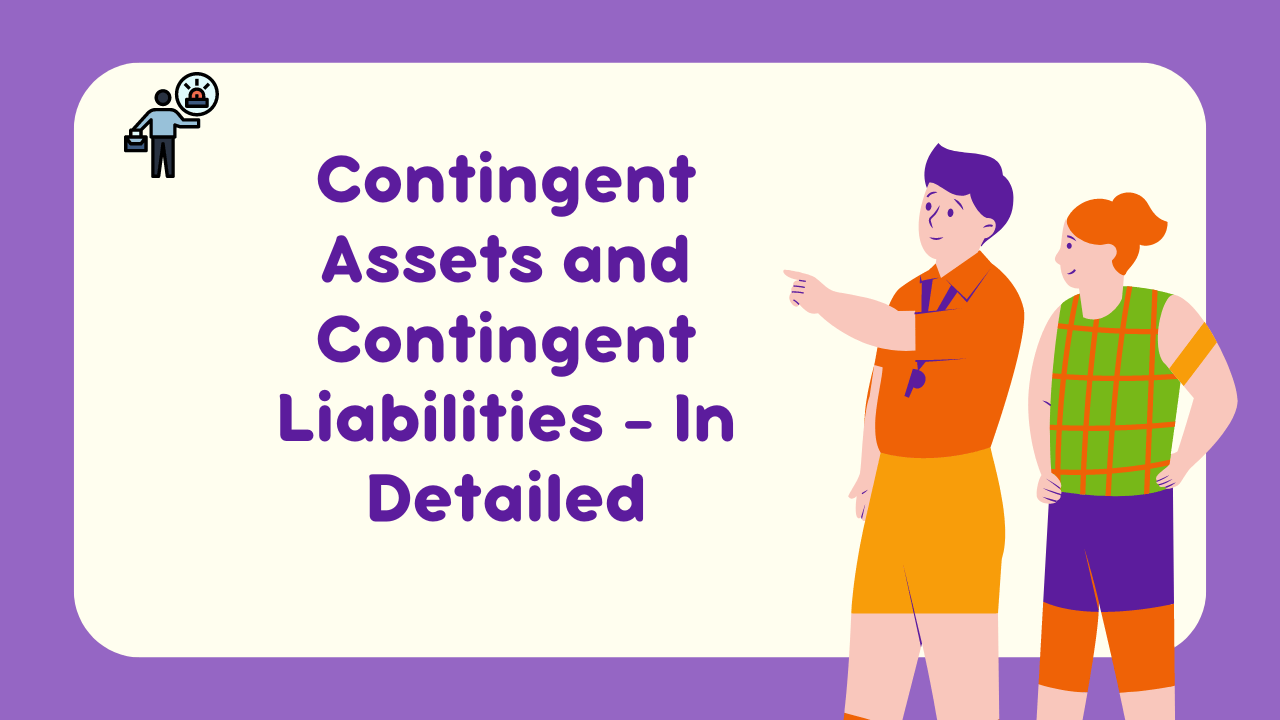Contingent Assets and Contingent Liabilities: A contingent asset is a potential asset associated with a contingent gain. Unlike contingent liabilities and contingent losses, contingent assets and contingent gains are not recorded in accounts, even when they are probable and the amount can be estimated. and contingent liability is defined as a liability that may arise depending on the outcome of a specific event. It is a possible obligation that may or may not arise depending on how a future event unfolds. You may also like Contingent Liability.
(I) Contingent Assets:
The assets in which the possibility of an economic benefit depends solely upon future events that can’t be controlled by the company are contingent assets. Due to the uncertainty of future events, these assets are not placed on the balance sheet. However, they are presented in the company’s financial statement notes. These assets are often simply rights to a future potential claim based on past events.
A contingent asset is a possible asset that arises from past events the existence of which will be confirmed only by the occurrence or non-occurrence of one or more uncertain future events not wholly within the control of the enterprise.
Contingent assets usually arise from unplanned or other unexpected events that give rise to the possibility of an inflow of economic benefits to the enterprise.
Contingent assets are not recognized in financial statements since this may result in the recognition of income that may never be realized. It is usually disclosed in the report of the approving authority where an inflow of economic benefits is probable. However, when the realization of income is virtually certain, then the related asset is not a contingent asset and its recognition is appropriate. Must Check Various Types of Lease.
Example: A potential settlement from a lawsuit or legal processes. The company does not have enough certainty to place the settlement value on the balance sheet, so it can only mention the potential in the notes. This improves the accuracy of financial statements.
(Ii) Contingent Liabilities
It represents a potential obligation that could be created depending on the outcome of an event. E.g. if the supplier of the business files a legal suit, it will not be treated as a liability because no obligation is created immediately. If the verdict of the case is given in favor of the supplier then only the obligation is created.
Till that it is treated as a contingent liability. Please note that contingent liability is not recorded in books of account, but disclosed by way of a note to the financial statements. The possibility of an obligation to pay certain sums dependent on future events is known as contingent liability. Contingent liabilities are liabilities that may or may not be incurred by an entity depending on the outcome of a future event.
They are defined obligations by a company that must be met, but the probability of such payment is minimal. The nature and extent of the contingent liabilities is described in the footnote to the balance sheet. These liabilities are recorded in a company’s accounts and shown in the balance sheet only when both probable and reasonably estimable. Must Read Weighted Average Cost of Capital.
Some good examples of contingent liabilities would be an outstanding lawsuit, bank guarantee, etc. Suppose, a company issued a former employee `500,000 for discrimination, the company will have a liability if it is found guilty. However, if the company is not found guilty, the company will not have an actual liability. Such a liability is known as a contingent liability.
A contingent liability is a possible obligation that arises from past events and the existence of which will be confirmed only by the occurrence or non-occurrence of one or more uncertain future events not wholly within the control of the enterprise. It is a present obligation that arises from past events but is not recognized because it is not probable that an outflow of resources embodying economic benefits will be required to settle the obligation or a reliable estimate of the amount of the obligation cannot be determined.
Recommended







